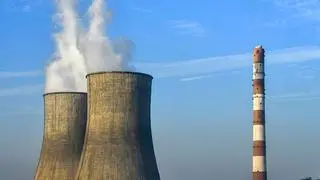With metal prices shooting through the roof, Harssha Shetty, Director-Marketing, International Business, Vedanta Group, in an interview with BusinessLine, explains fundamentals of the metals market in India and globally. Excerpts:
How do you see the global base metals markets at present? How’s demand-supply playing out?
Currently, there are a few broad themes which are playing out in the market in the commodities space. One is the US elections and the stimulus expectations. If Joe Biden wins, a predictable policy environment and shift from ‘trade protectionism’ to ‘trade promotion’ policies would be good for commodities. The $2-trillion war chest which Biden has planned for infrastructure and clean energy will also be positive for non-ferrous metals. The second theme, is the second wave of Covid-19, which is impacting the demand. Although we see a V-shaped recovery in a few economies, we should remember that what goes up comes down and what goes down comes up.
So, while there is a clear recovery in India, many segments of demand need to be back to pre-Covid levels and for some time people will spend on the ‘needs rather than wants’. Hence, while there is a good consumer spending in the West, here it is not consumer spending led recovery, it is government spending led recovery… China has recovered, no doubt. Most of their economic indicators are positive, but the Rest of the World (ex-China) will need to be back on track next quarter for a sustained global recovery. This is the right time for our government to protect the domestic industry against imports from China and review our FTAs.
Demand for metals led by China is strong globally, but how’s the Indian picture?
In India, the IIP has sharply recovered to positive territory and the PMI is very strong at 56.8. This bodes well. The count of tenders announced by Central and State governments has increased by 300 per cent over April 2020. The government’s Housing for All and the electrical infra projects will pump up non-ferrous metal demand in the next two quarters. The demand for long steel products is actually better than what it was during pre-Covid. This signals nothing but a very strong infrastructure demand. On the consumer side, when we speak to the battery manufacturers or automobile customers what we see is the demand for the alloy called A356.2 in aluminium which goes into making of alloy wheels for which we are the only producer in the country, the kind of demand which is coming is more than we had ever imagined. And the reason seems to be the automobile makers expecting two-wheeler sales in a big way as they find more people wanting to have their own private mobility because of the fear of Covid. So, all in all, we expect consumption this quarter in non-ferrous metals to be at least 20-25 per cent better than last quarter (September 2020 quarter). Q4 of this financial year is likely to be at the same level or slightly better than last year Q4. H2 will definitely show a 5-7 per cent growth over H2 of FY20.
Which are the metals that are witnessing a strong demand and which are the sectors fuelling the demand?
Among non-ferrous metals, aluminium consumption is very strong now. Copper and zinc have recovered fast. The buying is from infrastructure players (largely due to government spending in electrical transmission towers, low cost housing projects) and automobile manufacturers.
Copper prices have hit a peak of $7,000/tonne in LME. Do you think there is more room for prices to go up?
In the short term, that is 3-6 months, there is a strong support driven by Chinese demand and the supply tightness in copper. If Joe Biden wins, the $2-trillion stimulus will also help is the medium to long term.
For India, how you think this year will end compared to FY20?
FY21 will end on a crescendo. A lot of latent demand will be fulfilled in the next five months. There will be only a five per cent contraction in demand for aluminium, thanks to the strong recovery in last two months.
In copper, zinc and lead, it may be to the tune of 7-9 per cent mainly because of the Q1 contraction. FY22 depends on the geopolitical canvas post the US elections. It also depends on how anti-China trade sentiment pans out. Europe has already slapped an anti-dumping duty on imports from China. And, even if Biden comes to power, he may not soften the stance on China.
That said, the India picture is good with strong demand from infrastructure players. The MSME incentives which the government has announced, will help. The world will cosy up to India for being a compelling alternative to China thus opening up more domestic demand. And, since we are a country under construction, future is good for metal players.









Comments
Comments have to be in English, and in full sentences. They cannot be abusive or personal. Please abide by our community guidelines for posting your comments.
We have migrated to a new commenting platform. If you are already a registered user of TheHindu Businessline and logged in, you may continue to engage with our articles. If you do not have an account please register and login to post comments. Users can access their older comments by logging into their accounts on Vuukle.